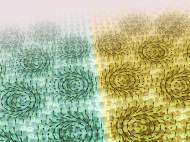Getting closer to skyrmion magnetic data storage
 A research done in collaboration between researches at the RIKEN Institute and the University of Tokyo has revealed a way for structural control of tiny magnetic vortex structures known as skyrmions. The discovery could lead to a compact, low-power alternative to conventional magnetic data storage – a solution vital to dealing with constantly growing volume of digital information.
A research done in collaboration between researches at the RIKEN Institute and the University of Tokyo has revealed a way for structural control of tiny magnetic vortex structures known as skyrmions. The discovery could lead to a compact, low-power alternative to conventional magnetic data storage – a solution vital to dealing with constantly growing volume of digital information.
Conventional technologies for digital data storage such as hard disks, solid state drives, and magnetic tapes have their limits. For example, hard disk drives require not only physically smaller memory elements or bits, but also reduced switching power to avoid overheating issues.
Skyrmions were first postulated as a theoretical particle by physicist Tony Skyrme in 1962. Studies showed that they can form within a chiral crystal lattice. These 2D knot-like structures are more stable than other magnetic structures including those used in modern magnetic storage devices. Skyrmions can be shrunk down to considerably smaller sizes before becoming unstable.
“Each skyrmion can be considered as a single particle and could represent an information bit. The small size of skyrmions is also of great advantage to high-density integration in devices”, said Kiyou Shibata, researcher at the University of Tokyo.
Skyrmions have been in the focus of active research in the last years. They began to attract interest for practical applications since the RIKEN researchers have published their previous work. Researchers demonstrated that skyrmions can exist in near room temperature and can be manipulated using low electrical current densities – about 100,000 times less than those required for controlling conventional ferromagnetic structures.
In order to achieve better control over the properties of skyrmions, researchers studied a range of manganese–germanium magnets by preparing magnetic compounds, in which they increasingly replaced manganese with iron. They examined skyrmions in various magnets by means of Lorentz transmission electron microscopy and convergent-beam electron diffraction.
The results showed that the size of skyrmions changes gradually with composition and that a ratio of about 80 percent iron and 20 percent manganese changes their orientation. This can be explained by the fact that skyrmions showed iron-dependent change in the magnetic coupling between the magnetic properties of the electrons in the magnet and their movements around the atomic core.
According to the RIKEN researchers, it will be possible to make practical schemes to design devices based on skyrmions. Tuning the composition of the magnet allow creation of skyrmions with the desired size and orientation.
“The next stage of our research will focus on the manipulation of skyrmions. In particular, the dynamics of isolated skyrmions in confined structures have been predicted theoretically and would be a good subject for experimental research”, said Shibata.
For more information, read the article published in Nature Nanotechnology: “Towards control of the size and helicity of skyrmions in helimagnetic alloys by spin–orbit coupling ”.









Leave your response!